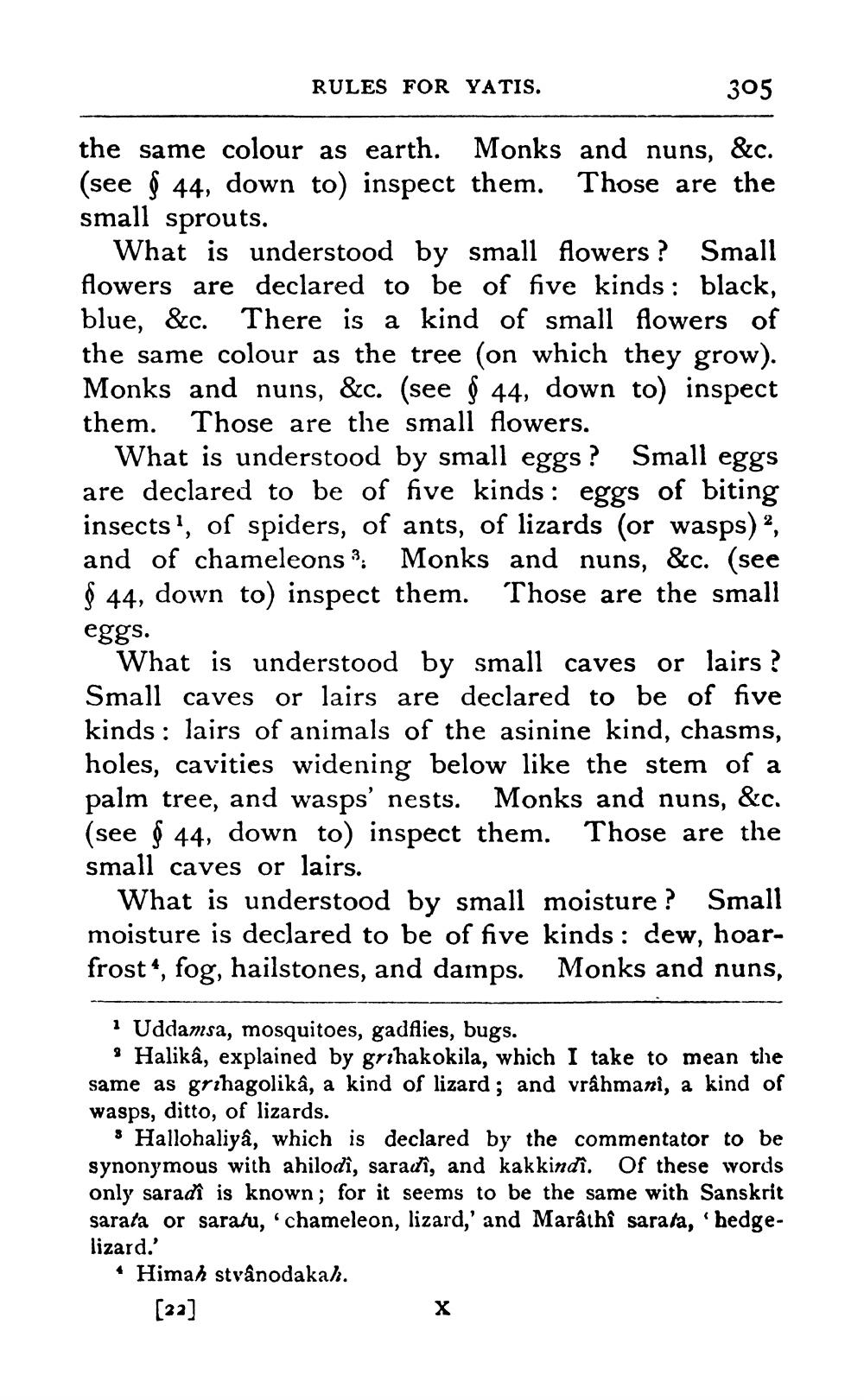________________
RULES FOR YATIS.
305
the same colour as earth. Monks and nuns, &c. (see § 44, down to inspect them. Those are the small sprouts.
What is understood by small flowers ? Small flowers are declared to be of five kinds : black, blue, &c. There is a kind of small flowers of the same colour as the tree (on which they grow). Monks and nuns, &c. (see § 44, down to) inspect them. Those are the small flowers.
What is understood by small eggs? Small eggs are declared to be of five kinds : eggs of biting insects', of spiders, of ants, of lizards (or wasps) 2, and of chameleons : Monks and nuns, &c. (see § 44, down to) inspect them. Those are the small eggs.
What is understood by small caves or lairs ? Small caves or lairs are declared to be of five kinds : lairs of animals of the asinine kind, chasms, holes, cavities widening below like the stem of a palm tree, and wasps' nests. Monks and nuns, &c. (see § 44, down to inspect them. Those are the small caves or lairs.
What is understood by small moisture? Small moisture is declared to be of five kinds : dew, hoarfrost-, fog, hailstones, and damps. Monks and nuns,
Uddamsa, mosquitoes, gadflies, bugs. . Halika, explained by grihakokila, which I take to mean the same as grihagolika, a kind of lizard ; and vrâhmani, a kind of wasps, ditto, of lizards.
• Hallohaliyâ, which is declared by the commentator to be synonymous with ahilodi, saradi, and kakkindi. Of these words only saradî is known; for it seems to be the same with Sanskrit sarata or saratu, chameleon, lizard,' and Marathi sarata, 'hedgelizard.' * Himah stvânodakah.
[22]




